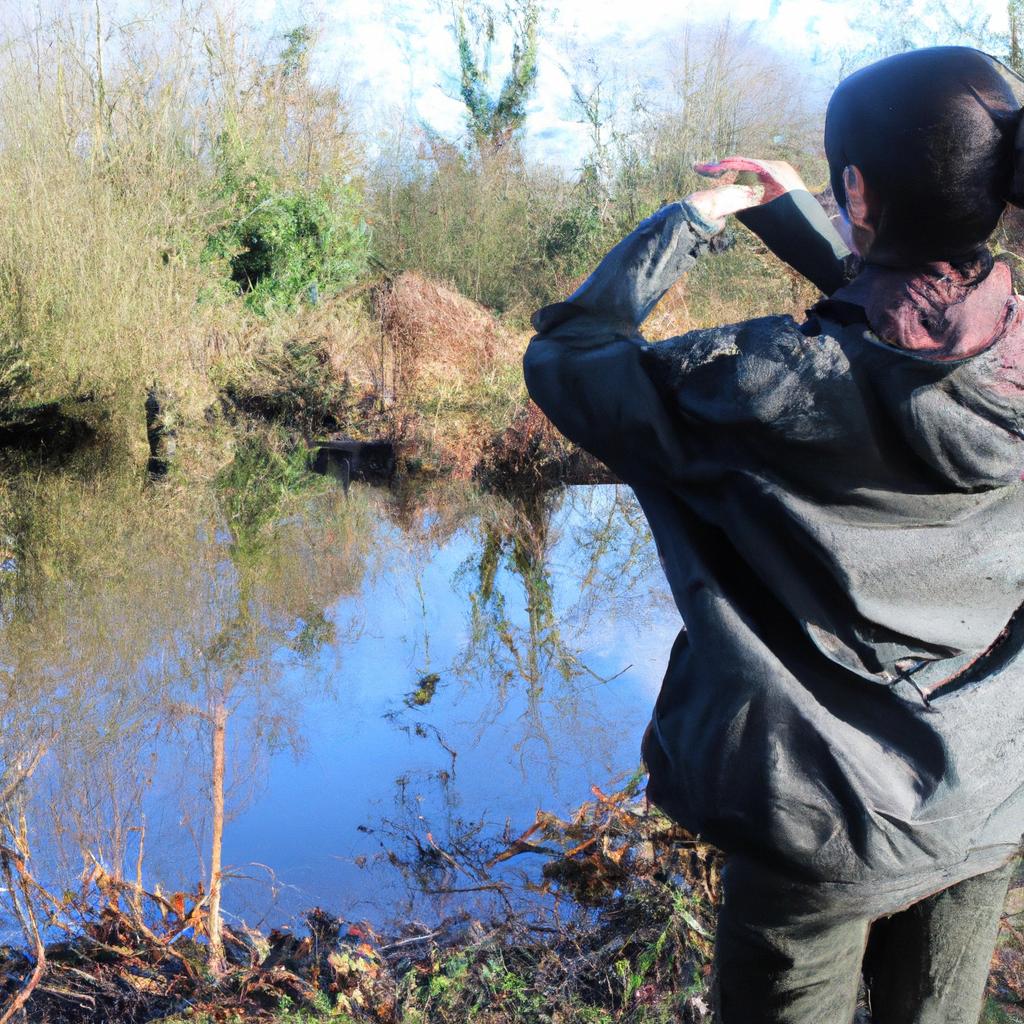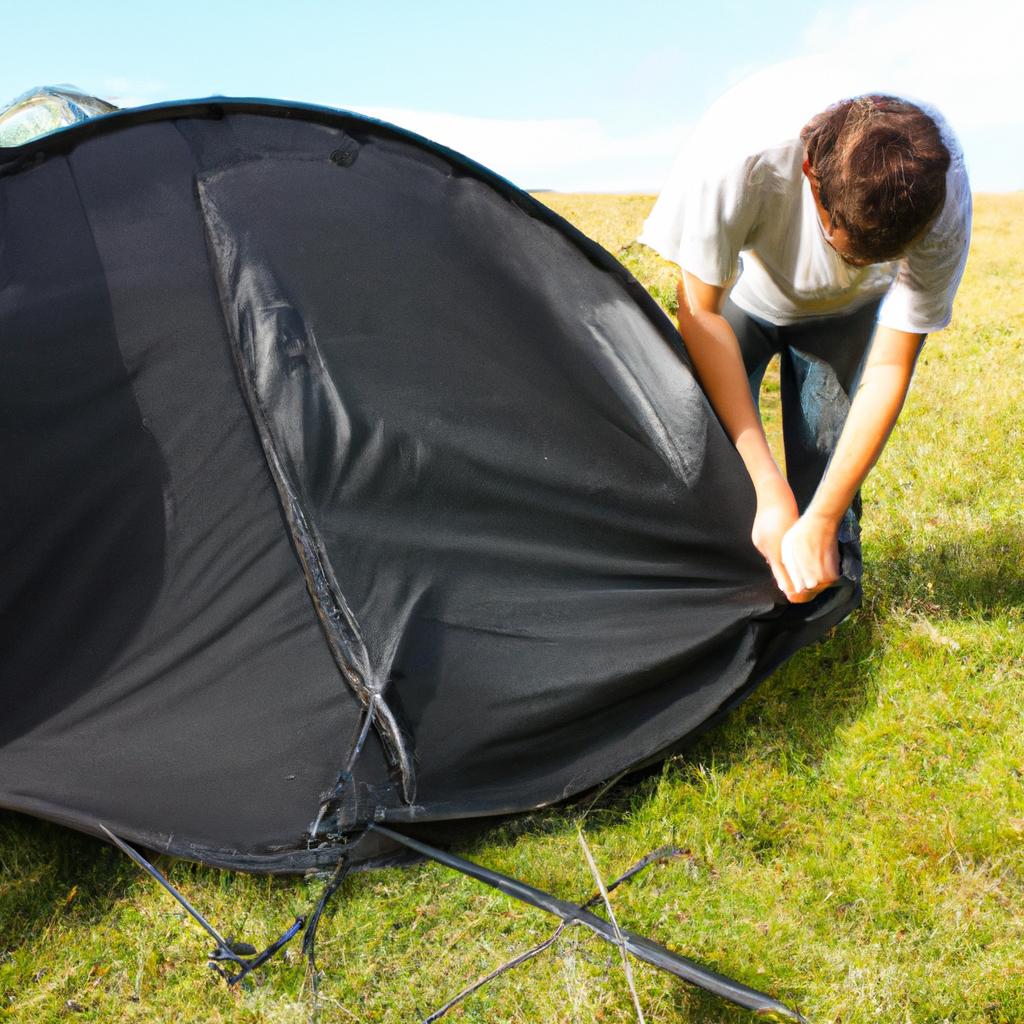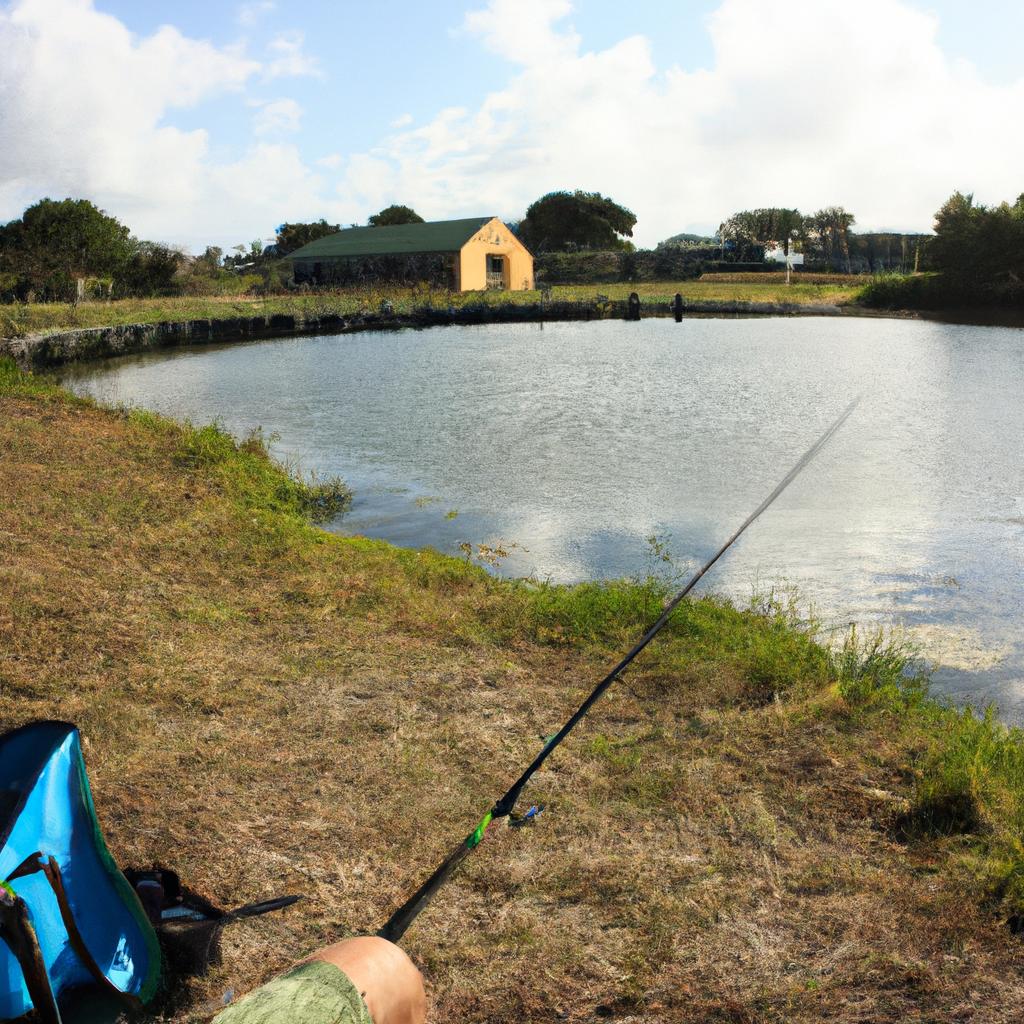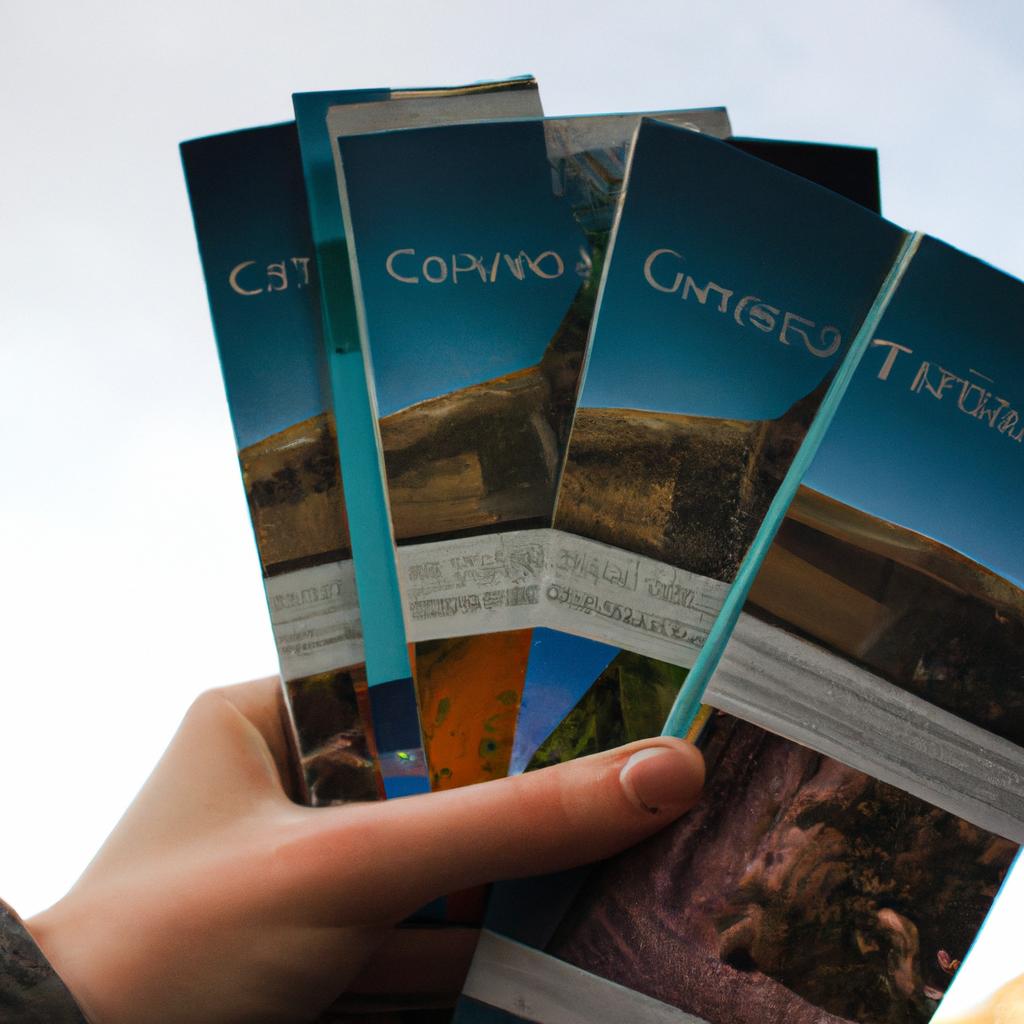Wildlife spotting has become an increasingly popular activity within the realm of eco-tourism recreation travel. This article aims to explore the significance and potential benefits of enhancing wildlife spotting experiences for both travelers and local communities. By examining a case study in Costa Rica, where tourists flock to witness the diverse array of flora and fauna, we can gain insights into how such activities contribute to sustainable tourism practices.
In recent years, there has been a growing interest among travelers seeking authentic encounters with nature while minimizing their environmental impact. Wildlife spotting serves as a prime example of this trend, allowing individuals to immerse themselves in natural habitats and observe elusive species firsthand. For instance, in Costa Rica’s Tortuguero National Park, tourists eagerly gather on riverbanks during nesting season to catch glimpses of endangered sea turtles emerging from the depths of the ocean to lay their eggs. Such captivating experiences not only generate awe and excitement but also foster awareness about conservation efforts and ecological preservation.
Enhancing wildlife spotting experiences holds immense potential for various stakeholders involved in eco-tourism recreation travel. Travelers benefit by gaining profound connections with nature through close encounters with wildlife species unique to specific regions. Local communities stand to gain economically as increased demand for guided tours and accommodation services provides job opportunities and encourages investment in local infrastructure. Additionally, community members may also benefit from increased awareness and appreciation for their natural surroundings, leading to a greater sense of pride and involvement in conservation efforts.
By prioritizing sustainable practices, wildlife spotting activities can contribute to the long-term preservation of biodiversity and ecosystem health. Responsible tour operators and guides ensure that visitors adhere to ethical guidelines, such as maintaining a safe distance from animals and avoiding actions that may disrupt their natural behaviors. These practices help minimize stress on wildlife populations and protect sensitive habitats.
Moreover, the revenue generated from wildlife spotting tourism can be reinvested into conservation initiatives and scientific research. In Costa Rica’s case, funds generated from entrance fees to national parks are allocated towards habitat restoration projects, anti-poaching efforts, and educational programs aimed at raising environmental awareness among local communities and visitors alike.
However, it is crucial to strike a balance between meeting the demand for wildlife spotting experiences and safeguarding the well-being of ecosystems. Overcrowding or excessive disturbance caused by mass tourism can have detrimental effects on animal behavior and degrade fragile habitats. Therefore, effective management strategies must be implemented to regulate visitor numbers, establish carrying capacities for specific sites, and enforce responsible behavior.
In conclusion, enhancing wildlife spotting experiences within eco-tourism recreation travel offers significant benefits for both travelers seeking authentic encounters with nature and local communities striving for economic development. By promoting sustainable practices and ensuring responsible visitor behavior, these activities contribute to biodiversity conservation while creating opportunities for education and socio-economic growth.
Benefits of Wildlife Spotting in Eco-Tourism
Imagine standing at the edge of a dense forest, binoculars in hand, eagerly scanning the treetops for a glimpse of an elusive bird species. This simple act encapsulates the essence of wildlife spotting, a popular activity within eco-tourism that offers numerous benefits to both travelers and local communities alike.
Enhancing Conservation Efforts:
One significant advantage of wildlife spotting in eco-tourism is its potential to promote conservation efforts by raising awareness about threatened species and their habitats. For instance, consider the case study of Lake Nakuru National Park in Kenya. Tourists flock to this destination primarily to witness the spectacular sight of thousands of pink flamingos gathered on the lake’s shores. By experiencing these awe-inspiring scenes firsthand, visitors develop a newfound appreciation for these magnificent creatures and are more likely to contribute towards their preservation through donations or advocacy.
- Awe-inspiring sights: Witnessing majestic animals roaming freely in their natural habitat evokes a sense of wonderment and amazement.
- Ethical travel: Engaging with wildlife spotlights responsible tourism practices such as respecting animal welfare and preserving delicate ecosystems.
- Educational opportunities: Learning about different species’ behaviors and ecological interactions fosters environmental consciousness among travelers.
- Connection with nature: Immersion in pristine wilderness allows individuals to reconnect with nature, promoting mental well-being and overall happiness.
Table – Positive Impacts of Wildlife Spotting:
| Benefits | Explanation |
|---|---|
| Economic boost | Increased tourist arrivals bring revenue for local communities |
| Cultural exchange | Interactions between tourists and locals foster understanding |
| Preservation | Funding from eco-tourism supports conservation initiatives |
| Sustainable development | Balancing economic growth with environmental protection |
Promoting Local Economies:
In addition to its positive impact on conservation, wildlife spotting in eco-tourism plays a pivotal role in supporting local economies. As tourists flock to destinations known for their rich biodiversity, businesses catering to these visitors thrive. Accommodation providers, restaurants, and tour operators all benefit from the influx of travelers seeking immersive experiences with nature. This economic boost not only creates employment opportunities but also encourages sustainable development within communities.
Understanding the benefits that wildlife spotting offers both conservation efforts and local economies, it is now essential to delve into some of the top destinations that attract avid eco-tourists. By exploring these remarkable places renowned for their diverse fauna, we can gain insight into what makes them so captivating and worth visiting.
Top Destinations for Wildlife Spotting
Enhancing Eco-Tourism Recreation Travel through Wildlife Spotting
As eco-tourism continues to gain popularity, wildlife spotting has emerged as a key component of this recreational travel experience. By immersing oneself in the natural habitats of various species, travelers not only witness fascinating animal behavior but also contribute to conservation efforts. For instance, consider the case study of a group of tourists visiting a national park in Africa. As they embarked on a guided safari tour, their encounters with lions, elephants, and zebras left them awe-struck and inspired to support local conservation initiatives.
The benefits of wildlife spotting in eco-tourism are numerous. Firstly, it allows individuals to connect with nature on a deeper level by experiencing firsthand the beauty and diversity of different ecosystems. This immersive encounter fosters appreciation for biodiversity preservation and promotes sustainable practices among visitors. Furthermore, wildlife spotting offers an opportunity for environmental education, as knowledgeable guides provide insights into the significance of each species within its ecosystem.
- Witnessing majestic creatures up close creates lifelong memories.
- The excitement of observing rare or endangered species fuels passion for conservation.
- Immersion in pristine natural environments provides solace and rejuvenation.
- Contributing directly to local communities ensures sustainable development.
In addition to these emotional appeals, a table can be utilized to further engage readers:
| Benefits | Description |
|---|---|
| Ecological Preservation | Protects habitats and contributes to conservation efforts |
| Educational Opportunities | Promotes awareness about diverse species and their role in ecosystems |
| Economic Growth | Supports local economies through job creation and revenue generation |
| Personal Enrichment | Provides enriching experiences that foster personal growth and connection with the natural world |
Looking ahead at successful wildlife spotting endeavors, careful planning and preparation are crucial. This includes researching top destinations known for their rich biodiversity, such as the Serengeti National Park in Tanzania or the Galapagos Islands in Ecuador. By selecting reputable tour operators who prioritize ethical practices and local community involvement, travelers can ensure a meaningful and responsible wildlife spotting experience.
Transitioning into the next section on “Tips for Successful Wildlife Spotting,” it is important to remember that effective wildlife spotting requires not only knowledge of animal behavior but also an understanding of conservation principles. With these considerations in mind, individuals can embark on their journey with confidence, knowing they will contribute positively to both eco-tourism recreation travel and environmental preservation.
Tips for Successful Wildlife Spotting
Case Study: Imagine you are visiting a wildlife sanctuary nestled in the lush rainforests of Costa Rica. As you embark on an early morning guided tour, your anticipation mounts as you hope to catch a glimpse of the elusive resplendent quetzal. The experienced guide leads you through dense foliage and suddenly points towards a distant treetop where the vibrant bird perches majestically. Your heart races with excitement as you capture this rare sighting, savoring the momentary connection with nature’s wonders.
To maximize such exhilarating encounters during wildlife spotting expeditions, consider implementing these strategies:
-
Engage Local Guides: Collaborate with knowledgeable local guides who possess intimate familiarity with the area’s flora and fauna. Their expertise can significantly enhance your chances of encountering wildlife species that may be well-camouflaged or residing in remote habitats.
-
Opt for Sustainable Accommodations: Choose eco-lodges or sustainable resorts that prioritize environmental conservation and minimize their ecological footprint. By staying at such establishments, not only do you support responsible tourism practices but also increase your proximity to natural habitats, allowing for more frequent sightings.
-
Adhere to Ethical Wildlife Viewing Practices: Respect animal welfare by observing from a distance and refraining from any actions that could disturb or harm them. Avoid feeding wild animals or attempting physical contact, as it disrupts their natural behavior patterns and compromises their overall well-being.
-
Embrace Citizen Science Initiatives: Participate in citizen science projects aimed at collecting data on various species’ populations, migrations, or behaviors. These initiatives foster a sense of contribution while enabling researchers to gather valuable information crucial for conservation efforts.
Table: Examples of Citizen Science Initiatives
| Initiative | Objective | Location |
|---|---|---|
| eBird | Track bird sightings | Global |
| iNaturalist | Document biodiversity observations | Global |
| WhaleTrack | Monitor whale migrations | Coastal regions |
| FrogWatch USA | Record frog and toad calls | United States |
By utilizing these strategies, wildlife enthusiasts can create unforgettable experiences that simultaneously contribute to conservation efforts.
Understanding how eco-tourism practices enhance wildlife spotting experiences sets the stage for exploring the crucial conservation efforts implemented worldwide.
Conservation Efforts in Wildlife Spotting
Enhancing Eco-Tourism Recreation Travel: Conservation Efforts in Wildlife Spotting
Now, let’s delve into the importance of conservation efforts in wildlife spotting to ensure the long-term sustainability and preservation of natural habitats. To illustrate this point, consider a hypothetical case study of an eco-tourist visiting a national park.
Imagine an avid nature enthusiast embarking on a guided tour through a diverse ecosystem filled with unique flora and fauna. As they explore the wilderness, their knowledgeable guide educates them about the delicate balance between human activity and wildlife preservation. This interaction serves as a prime example of how responsible tourism practices can contribute to conservation efforts while providing an unforgettable experience for travelers.
To effectively enhance eco-tourism recreation travel and promote conservation in wildlife spotting, it is crucial to implement key strategies:
-
Education and Awareness:
- Informing visitors about local biodiversity
- Emphasizing the significance of sustainable practices
- Encouraging respect for wildlife habitats
-
Community Engagement:
- Involving local communities in decision-making processes
- Establishing collaborative partnerships between stakeholders
- Promoting economic benefits derived from responsible tourism
-
Sustainable Tourism Practices:
- Limiting visitor numbers to minimize environmental impact
- Designating specific areas for observation without disturbing natural behavior
- Implementing waste management systems to reduce pollution risks
-
Research and Monitoring:
- Conducting studies on population dynamics and habitat requirements
- Collecting data on species distribution to inform conservation actions
To emphasize these points further, let us examine the following table showcasing the potential positive impacts that result from effective conservation efforts in wildlife spotting:
| Positive Impacts | Examples |
|---|---|
| Biodiversity | Preservation of endangered species’ habitats |
| Economic Growth | Job creation within local communities |
| Cultural Preservation | Protection of indigenous knowledge and practices |
| Environmental Stewardship | Enhanced ecosystem resilience |
By emphasizing these benefits, we can inspire a deeper emotional connection with the cause, encouraging individuals to become active proponents of wildlife conservation.
In summary, by incorporating education and awareness initiatives, engaging local communities, promoting sustainable tourism practices, and conducting research and monitoring activities, we can enhance eco-tourism recreation travel while safeguarding natural habitats. These efforts not only contribute to the preservation of biodiversity but also foster economic growth, protect cultural heritage, and promote environmental stewardship. In our next section on “Impacts of Wildlife Spotting on Local Communities,” we will explore how this form of tourism affects the people living in proximity to wildlife areas.
Impacts of Wildlife Spotting on Local Communities
Enhancing Eco-Tourism Recreation Travel: Impacts of Wildlife Spotting on Local Communities
In recent years, the popularity of wildlife spotting as a form of eco-tourism recreation travel has grown significantly. This section explores the impacts that this activity can have on local communities and their residents. To illustrate these impacts, let’s consider the case study of a small coastal town known for its diverse marine life.
One immediate impact of wildlife spotting on local communities is increased economic opportunities. As tourists flock to the area in search of unique wildlife experiences, businesses catering to their needs thrive. Hotels, restaurants, tour operators, and souvenir shops all benefit from the influx of visitors seeking wildlife encounters. The revenue generated by these enterprises helps support not only business owners but also their employees and families.
However, it is important to note that along with economic benefits come potential challenges. Increased tourism can lead to higher demand for resources such as water, energy, and infrastructure development. If left unchecked or unregulated, this could strain local capacities and put pressure on existing public services. Additionally, an overreliance on wildlife spotting may make communities vulnerable to fluctuations in tourist numbers or changes in ecological patterns.
The table below provides a visual representation of some key social and environmental impacts associated with wildlife spotting:
| Social Impacts | Environmental Impacts | Economic Impacts |
|---|---|---|
| Community pride and identity | Habitat disruption | Job creation |
| Cultural exchange between locals and tourists | Disturbance to breeding sites | Revenue generation |
| Improved infrastructure | Introduction of invasive species | Market diversification |
| Enhanced conservation awareness among residents | Waste management challenges | Investment in sustainable practices |
These impacts highlight both positive outcomes and potential concerns related to wildlife spotting within local communities. It becomes evident that effective management strategies need to be implemented to maximize the benefits and mitigate any negative consequences.
Looking ahead, future trends in wildlife spotting will likely focus on sustainable practices that balance economic growth with conservation efforts. The subsequent section will delve into these emerging trends, exploring how advancements in technology, community engagement, and policy frameworks can shape the future of this burgeoning eco-tourism sector.
Future Trends in Wildlife Spotting
Wildlife spotting, a popular activity within eco-tourism recreation travel, has significant impacts on local communities. By attracting visitors from all over the world, wildlife spotting provides economic benefits and opportunities for community development. This section will explore these impacts in detail.
One example of the positive impact of wildlife spotting on local communities is seen in the case of Green Valley National Park. Located in a small town surrounded by lush forests and diverse wildlife, the park has become a magnet for tourists seeking to experience nature up close. As a result, new businesses have emerged, such as eco-lodges and guided tour companies, providing employment opportunities for local residents.
- Economic growth: Wildlife spotting brings revenue to local businesses, including accommodations, restaurants, and souvenir shops.
- Job creation: The demand for guides, drivers, and hospitality staff increases with the influx of tourists.
- Infrastructure development: Improved transportation networks and facilities are often required to cater to visitor needs.
- Cultural exchange: Interaction between locals and visitors fosters cultural understanding and appreciation.
To emphasize the various dimensions of these impacts, consider the following table showcasing specific examples:
| Impact | Example |
|---|---|
| Economic Growth | Increased sales at local markets |
| Job Creation | Hiring additional park rangers |
| Infrastructure | Construction of visitor centers |
| Cultural Exchange | Organizing traditional dance events |
Overall, it is evident that wildlife spotting plays an essential role in enhancing local economies while promoting sustainable tourism practices. These positive outcomes highlight the importance of preserving natural habitats not only for ecological reasons but also as valuable assets for community development. It is crucial for governments and stakeholders to collaborate effectively to ensure responsible management of these resources.
By recognizing the significance of wildlife spotting beyond its recreational value, local communities can harness the potential of eco-tourism to create sustainable livelihoods and foster cultural exchange. Such endeavors contribute not only to economic growth but also to the preservation of biodiversity and the long-term well-being of both visitors and locals alike.












